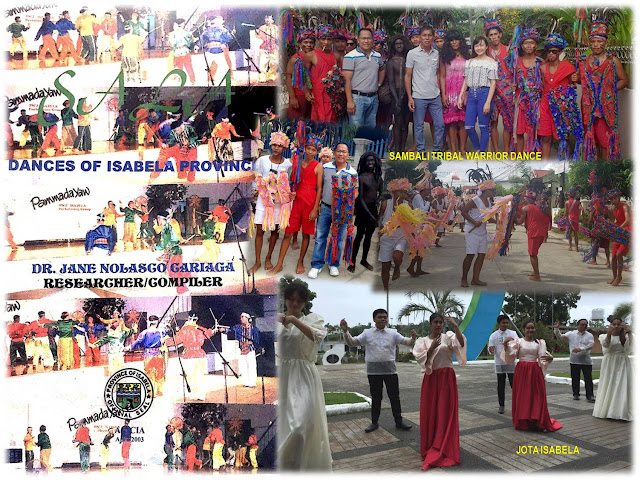38. NCI-SRD AT VILLA FERNANDINA
NCI-SRD AT VILLA
FERNANDINA
Dr. Troy Alexander G. Miano
20 June 2017
In behalf of Isabela
Governor Faustino G. Dy III, I received this morning the Award of Recognition
for Sustainable Rural Development from the DA-DENR-DAR-DILG Secretaries during
the 2017 National Convergence Initiative for Sustainable Rural Development (NCI-SRD)
Summit at Vigan Convention Center, Vigan City, Ilocos Sur. This is my last
official function as OIC Provincial Planning and Development Coordinator of
Isabela. As I report back to the Capitol, I will assume my duties as a
full-fledged department head – Provincial Tourism Officer under the Isabela
Tourism Office. Aside from the task of receiving the award, the Governor,
through the Provincial Administrator instructed me to attend this summit to
witness the launching of a national convergent program for strengthening the
institutionalization of the agri-tourism industry.
Senator Cynthia
Villar graced the launch of the program with the presence of Representative
Deogracias Victor B. Savellano (1st District, Ilocos Sur); Ilocos Sur Governor
Ryan Luis V. Singson, the president of League of Provinces of the Philippines
(LPP); and Vigan City Mayor Juan Carlo S. Medina, the chairperson of the Regional
Development Council (RDC) 01.
Also present during
the event were Agrarian Reform Secretary Rafael Mariano, Tourism Undersecretary
Silvino Q. Tejada, Agriculture Undersecretary Evelyn Lavina, ranking officials
and employees from the Department of the Interior and Local Government (DILG),
and a former colleague when I was in the Department of Environment and Natural
Resources (DENR) Undersecretary Jonas R. Leones, local officials and
stakeholders all over the country.
Dubbed as the
“Institutionalization of District-Wide Agro-Industrialization, Innovation and
Tourism (IDAIT) Convergence Site,” the convergent program was conceptualized by
Rep. DV Savellano to promote an agri-tourism industry in the country to further
solve the problems on hunger and poverty; and to sustain food security. The
convergent initiative is in line with Republic Act 10816 otherwise known as the
Farm Tourism Development Act authored by Villar.
Manila Bulletin’s
Freddie Lazaro reports that Villar also stated that “The goal of the National
Convergence Initiative for Sustainable Rural Development (NCI-SRD) of the
departments of Agriculture, Agrarian Reform, Environment and Natural Resources,
and Interior and Local Government, is to reduce poverty and ensure sustainable
countryside development through farming and fishing among others in which this
is aligned with my own goals and advocacies; and I am confident that the
collaboration of the four government departments will create a positive impact
on the lives of many Filipinos in the countryside.”
She cited that the
key essence of the Farm Tourism Development Law is for the government to
recognize that tourism, coupled with agriculture extension services, could
disseminate the value of agriculture in the economic and cultural development
of the country, serve as a catalyst for the development of agriculture and
fishery communities, and provide additional income for farmers, farm workers,
and fisherfolk.
“The important
provision of Farm Tourism Development Law is the encouragement of the
Departments of Tourism and Agriculture to establish at least one farm tourism
camp or site in every province in the country,” said Villar. “This initiative
has great help for the rural development because almost all farm tourism sites
are located in the rural areas; and I’m aiming for not only one tourist
farm/farm school in every province but in every town in the Philippines should
teach the farmers and fisherfolk to overcome the barriers to profitability and
competitiveness,” she added.
According to Villar,
it is very necessary to give support to the small farmers and family farms in
rural areas because there would be a time when we would not source our foods
from corporate farms but we source it from small farmers. “Thus, I’m appealing
to our farming families not stop tilling the soil as there would be a time when
we lack food to eat,” she added.
I always get thrilled
whenever I enter the arc of Vigan City in Ilocos Sur. I feel that I am being
transported back to the Spanish period in our history. Vigan is a UNESCO World Heritage Site in that it is
one of the few towns left in the
Philippines whose old structures have mostly remained intact, and it is well
known for its cobblestone streets and a
unique architecture of the Philippine colonial era which fuses Native
Philippine and Oriental building designs and construction, with colonial
Spanish architecture. In May 2015, Vigan City was officially recognized as one
of the New7Wonders
Cities together
with Beirut, Doha, Durban, Havana, Kuala Lumpur and La Paz.
Wikipedia reveals
that the area of Vigan was originally a settlement of traders coming from
the Fujian Province, China. At the time of Spanish colonization, the Chinese
settlers, whose language was Southern Fujianese (Min Nan, often referred to
as "Hokkien" by most Filipinos), referred to the area as “Bee
Gan” which means "beautiful shore." Since the Spanish conquistadors
interchanged “V” and the “B” to refer to the “B” sound, they spelled the
Hokkien Chinese name "Bee Gan" as Vigan, which is now used.
Another etymology
came from the name of the bigaa
plant, which once grew abundantly along the banks of the Mestizo River. Spanish
Captain Juan
de Salcedo registered
the plant’s name as the name of the locality after a misunderstanding with the
natives due to language barrier. The Spaniard later rechristened the locality
as “Villa Fernandina” or "Town of Ferdinand", in honor of Prince
Ferdinand, the firstborn son of King Philip
II of Spain.
My new task as
tourism czar gave me a fresh start as I toured around Ciudad Fernandina de Vigan for the nth time. The new
tourism field, agri-tourism, is very timely since the province is the corn and munggo capital of the country and the
No.1 surplus rice producer in the Philippines. Giving tourists a glimpse on how
their staple day to day food is produced would surely be appreciated by
travellers, adventurers and explorers specially those coming from the
metropolis.




Mga Komento
Mag-post ng isang Komento